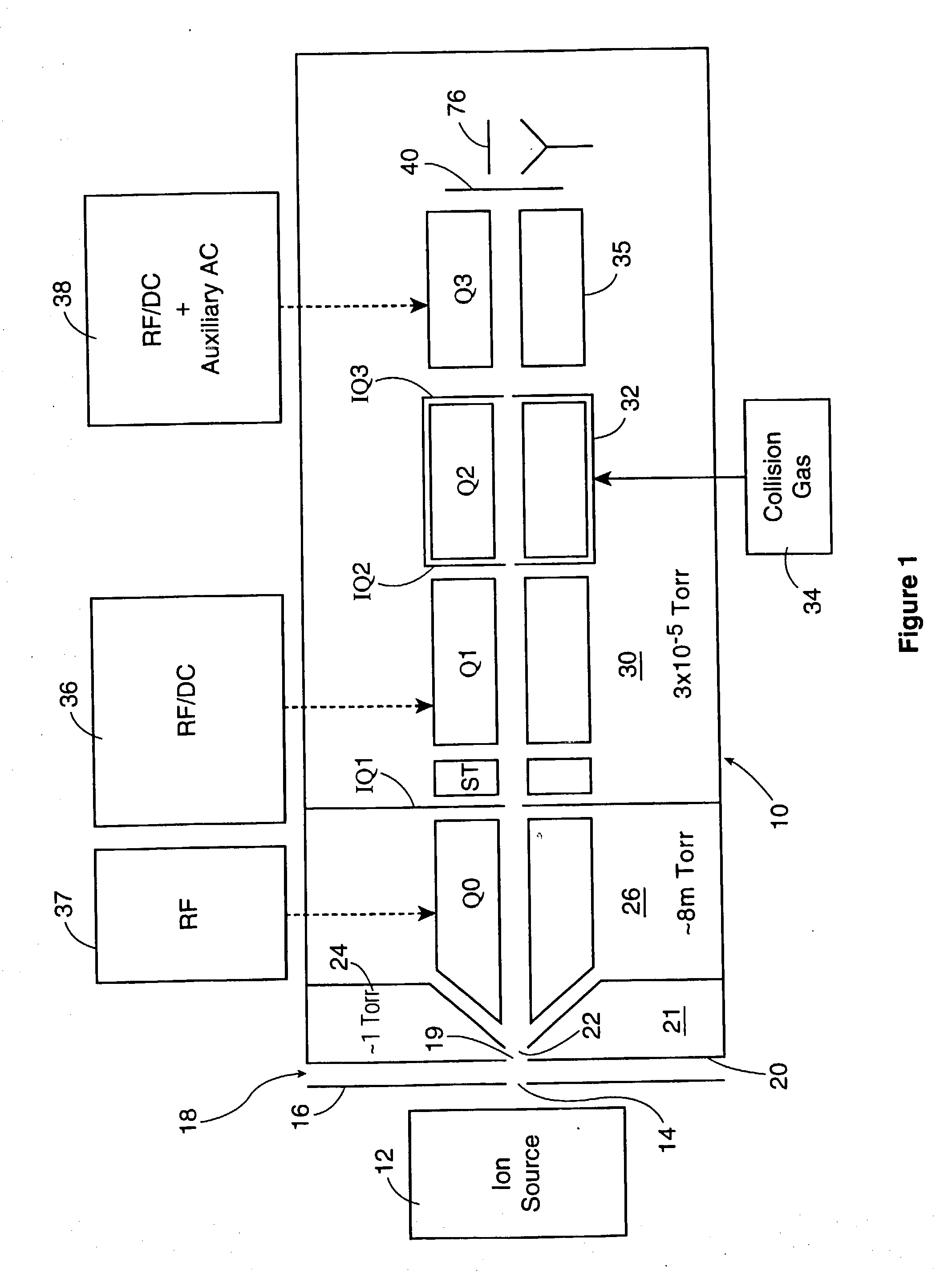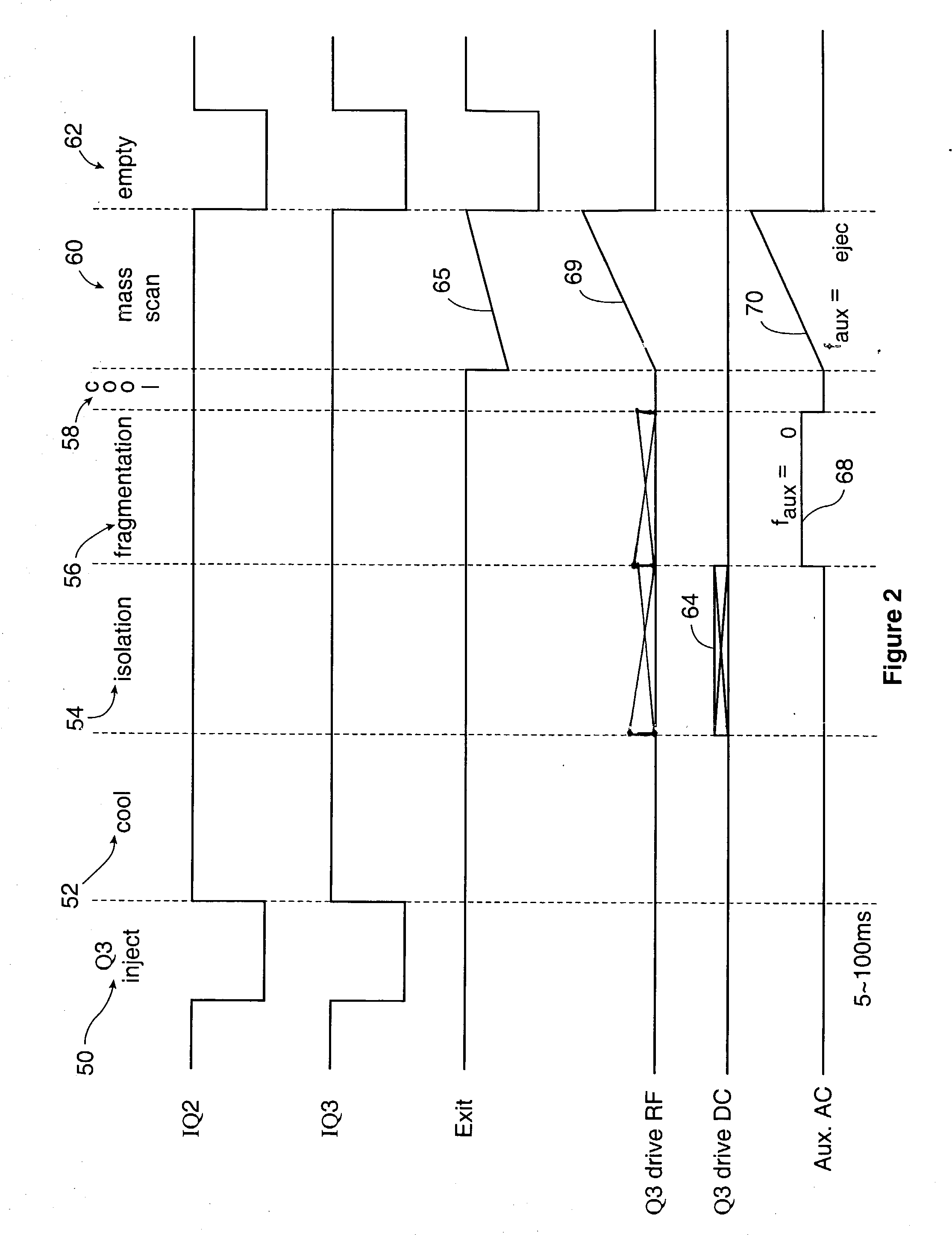Fragmentation of ions by resonant excitation in a low pressure ion trap
a resonant excitation and ion trap technology, applied in the field of fragmentation of ions by resonant excitation in a low pressure ion trap, can solve the problem of relatively low ability to isolate and fragment a specific ion within the collision cell, and achieve the effect of promoting collision-induced dissociation of selected ions
- Summary
- Abstract
- Description
- Claims
- Application Information
AI Technical Summary
Benefits of technology
Problems solved by technology
Method used
Image
Examples
Embodiment Construction
[0027] FIG. 1 illustrates a mass spectroscopy apparatus 10 in accordance with a first embodiment. In known manner, the apparatus 10 includes an ion source 12, which may be an electrospray, an ion spray, a corona discharge device or any other known ion source. Ions from the ion source 12 are directed through an aperture 14 in an aperture plate 16. On the other side of the plate 16, there is a curtain gas chamber 18, which is supplied with curtain gas from a source (not shown). The curtain gas can be argon, nitrogen or other inert gas, such as described in U.S. Pat. No. 4,861,988, to Cornell Research Foundation Inc., which also discloses a suitable ion spray device. The contents of this patent are incorporated herein by reference.
[0028] The ions then pass through an orifice 19 in an orifice plate 20 into a differentially pumped vacuum chamber 21. The ions then pass through aperture 22 in a skimmer plate 24 into a second differentially pumped chamber 26. Typically, the pressure in the ...
PUM
 Login to View More
Login to View More Abstract
Description
Claims
Application Information
 Login to View More
Login to View More - R&D
- Intellectual Property
- Life Sciences
- Materials
- Tech Scout
- Unparalleled Data Quality
- Higher Quality Content
- 60% Fewer Hallucinations
Browse by: Latest US Patents, China's latest patents, Technical Efficacy Thesaurus, Application Domain, Technology Topic, Popular Technical Reports.
© 2025 PatSnap. All rights reserved.Legal|Privacy policy|Modern Slavery Act Transparency Statement|Sitemap|About US| Contact US: help@patsnap.com



